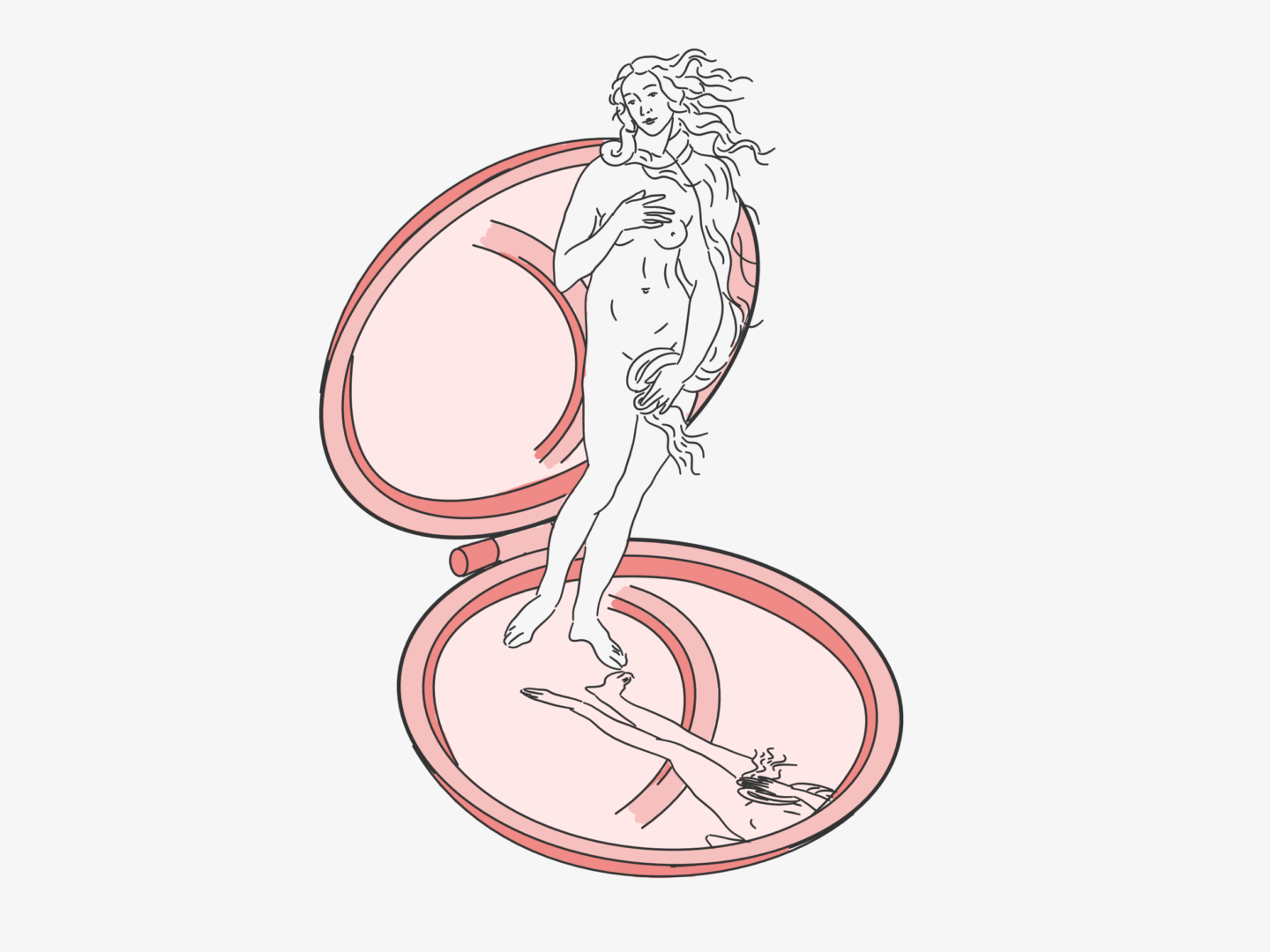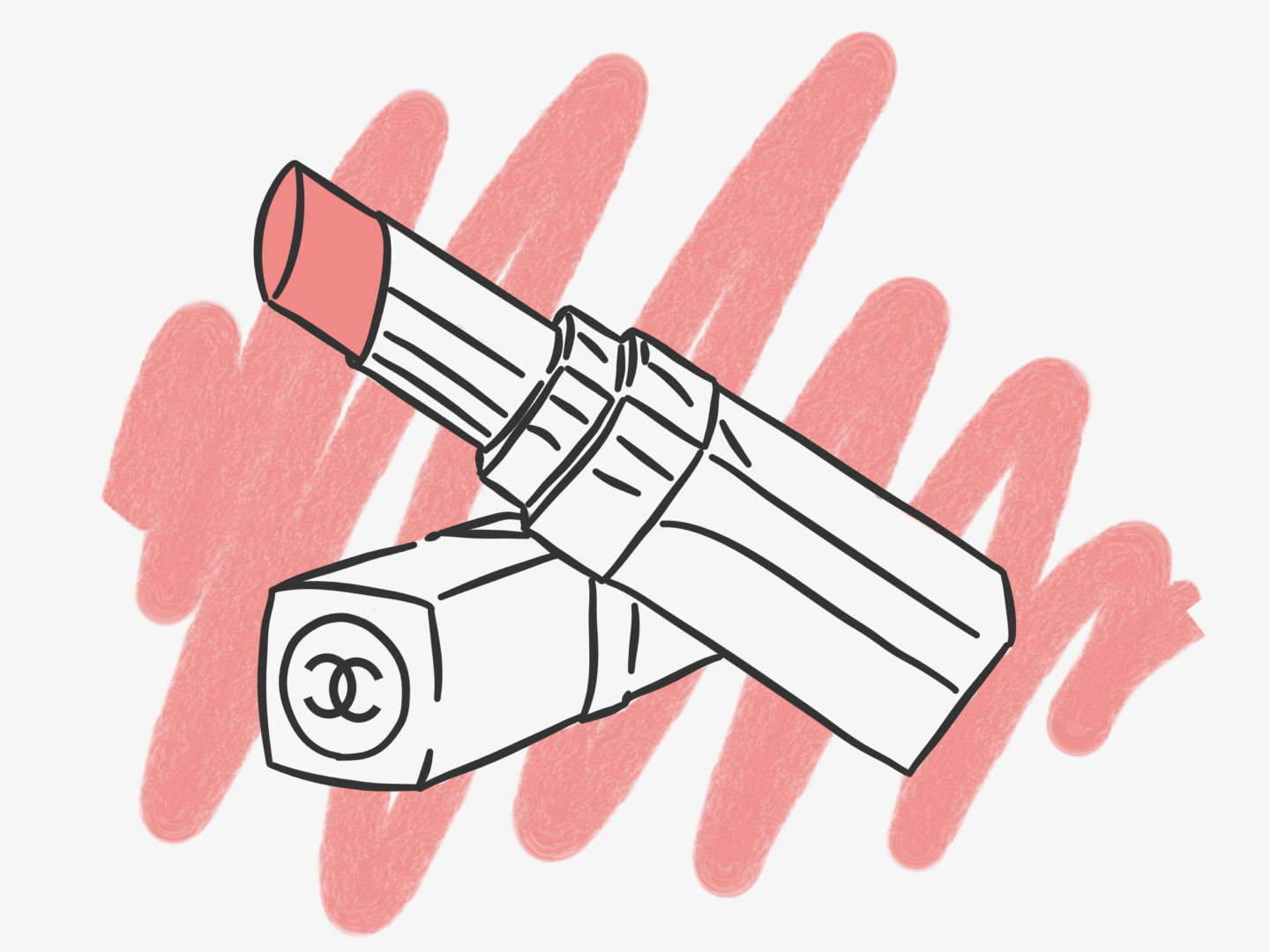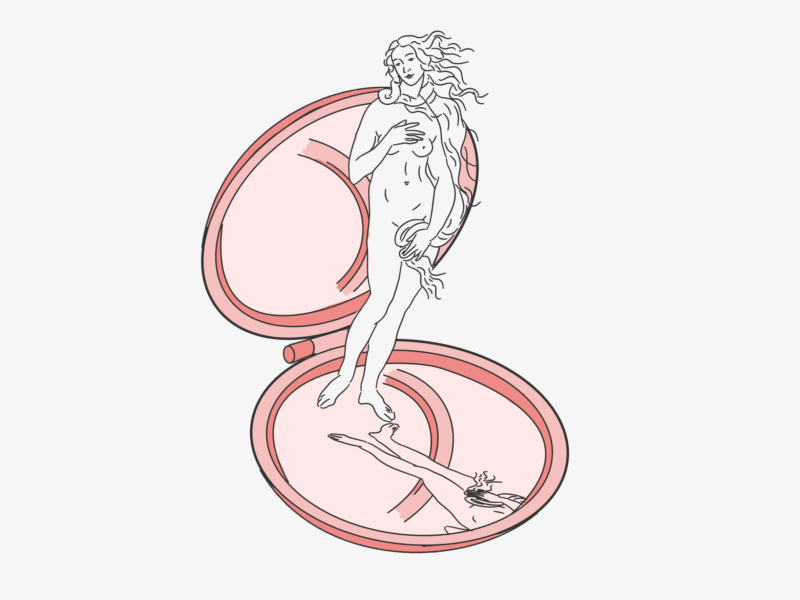This is perhaps the closest I will ever get to being a beauty blogger and I am pretty excited about it. I am so excited in fact that I am coming at you with not one, but two design stories this time. I’ve taken a couple of objects from my makeup bag, inspired by the classic “what’s in my bag” Youtube videos, and telling their story: the compact mirror and the lipstick bullet.

COMPACT MIRROR
Silvered glass mirrors, like the ones we use today, have been around for almost two centuries. In 1835, Justus von Liebig, a German chemist, created a process for applying a thin layer of silver to one side of a pane of glass. His choice of silver instead of the previously used lead and mercury was not only safe but a lot more reflective. It took him 20 years to refine this process to a stage where it could be marketed to manufacturers.
His method stood until 1930 when John Strong, an astronomer and physicist from California University of Technology, created a method using a vacuum to deposit aluminium foil to telescopes and scientific instruments which was later appropriated for mirrors. This is the method we use to this day.
However, mirrors have been around for as long as you can imagine. The first mirrors were simply pools of still water. Who can forget the story of Narcissus who fell in love with her own reflection in a pool of water?
Moving beyond puddles, in Turkey, obsidian mirrors from 6,200 BCE were discovered in an archaeological dig and people in Iran have used polished copper as mirrors at least as early as 4,000 BCE. Mirrors have been present throughout history, being developed independently by different cultures.
A Chinese source from 673 BCE states that the queen wore a mirror at her girdle, suggesting that the compact mirror has a long history as well. But the decorative, clam style, compact mirror we would think of today didn’t rise to popularity until the early 1900s when as Andrea DiNoto states in Art Plastic: Designed for Living that as “women began to enter the workforce in greater numbers it became necessary to transform vanity items into portable forms.” And these compacts became increasing decorative statement pieces. While the compacts of today aren’t quite as important as status symbols they do owe their design to all of the interweaving stories that have been a part of the mirror’s history.

LIPSTICK BULLET
Now I’m not a regular lipstick wearer, but when I do, nothing makes me feel quite as special or grown up as rolling up a lipstick bullet or the satisfying magnetic click of the closure as I purse my lips together.
Like mirrors, lipstick has been around in some form or another for aaaages. In Mesopotamia, Queen Shub-ad of ancient Ur, was reportedly the first to use a lip colourant made of white lead (not her best idea) and ground red rocks, in approximately 3500 B.C. From around 2000 B.C. rich Egyptians, including Cleopatra a little later, used crushed carmine beetles, and occasionally fish scales for shimmer, to add colour to their lips.
But we’re not here to talk about the colour itself, instead, I wanted to know about the bullet that holds the product. While there are rumours that, in the 16th Century, Queen Elizabeth, who made her own personal crimson shade, invented the lip pencil by mixing ground alabaster or plaster of Paris with a colouring ingredient and rolling the paste into a crayon shape before drying it in the sun, it wasn’t until the 1910s that lipsticks were readily sold as sticks. Guerlain is credited with that move, selling lipsticks in paper tubes or tins to aristocratic customers, a style which became more accessible by World War I.
Maurice Levy is most often credited with creating, or at least commissioning the first metal push up tube for lipstick in 1915, which was then mass produced by The Scovill Manufacturing Co. However, there are a number of arguments that suggest such packaging was actually in use before Levy began selling it through his cosmetics company.
Whoever invented this first push up packaging, it was only popular for around a decade because in 1923 the first swivel-up lipstick was patented in 1923 in the USA by James Bruce Mason Jr. There seems to be little written about how he invented the swivel tube, except for his own notes on his patent:
“An object of my invention is to provide a device of the character described which affords facilities for removably holding a lipstick so that the latter is available for application when desired and when not being used is protected by an encasing body.”
What we do know is that after Mason Jr.’s invention lipstick soared in popularity because it was now portable and easy to use. Meaning women could mimic the styles of popular movie stars on the go, including taking inspiration from the original “It girl” Clara Bow who made the “Cupid’s bow” style of lipstick application a hit.
Key Sources:
- Live Science, Who Invented the Mirror?
- Mirror History, The History of Mirrors and Mirror Facts
- American Popular Culture, ABOUT FACE: The Emergence, Evolution, and Demise of the Decorative Compact
- Thought Co., The Invention of the Mirror
- The Mirrorworld Blog, Justus von Liebig – Mirror Silvering
- Collecting Vintage Compacts, Maurice Levy the Man Who Never Invented Metal Lipstick Containers
- Bustle, The History of Red Lipstick, From Ancient Egypt To Taylor Swift & Everything In Between
- V is for Vintage, The History of Lipstick
- Marie Claire, The History of Red Lipstick
- Lipstick History, Lipstick Timeline
- The Toast, An (Abridged) History of Red Lipstick – READ THIS ONE! IT’S GOOD!!!


